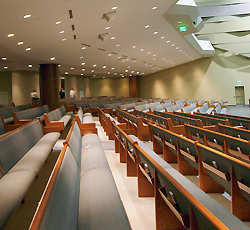“Hi, my name is Bob. I’m with “xyz” church and we’re designing a new worship center,” says a voice on the other end of the phone. “The architect told us it’s time to get a sound guy involved, so I’m calling you.”
“Oh no,” I think, “this is the first sign of trouble.”
After talking with him to get initial information about the scope of the project, we get to the heart of the problem: “Most of the building design is complete. Now we need someone to do the acoustics and sound design,” he tells me.
I see a large red flag waving back and forth. Bells and whistles are going off.
I recognize Bob’s problem: It’s my nightmare.
Where The Problem Begins
Most churches planning to build a new worship center will hire a professional architect to work on the programming and design phases of the project. Prior to this, they interview several architects, using specific qualifications criteria, to select the one they want to work with. Once the architect is chosen, the process begins.
The architect may tour several different facilities with the church building committee and note the committee’s likes and dislikes about each of the buildings they visit. The architect then takes the committee’s likes and copies them into the plans for the new facility. Often, however, the same problems that existed in those rooms are also copied into the new plans.
Some time later, after the schematic design and design development is complete and the project is well into the facility design phase, the architect discovers he needs to know what type of finishes the room requires; for example, if acoustic panels will be used. It’s at this point in the design process, when these types of questions start to arise, that most churches decide to hire an acoustical consultant.
The problem is that by this point in the project’s design, the architect has already largely determined the acoustics. This is because the acoustical characteristics of a room are primarily determined by the room size and room shape.
Room size and shape, in turn, are determined by the room architecture. After the room size and shape are established, the room finishes have only a minor impact on the room acoustics. It’s really almost too late to make significant changes to the room acoustics once the room size and shape have been determined.




















